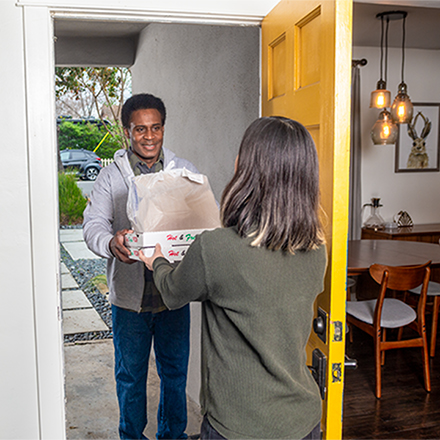- Insurance Guide
- Property Insurance
- Understanding Your Homeowner’s Insurance Policy
Understanding your homeowner’s insurance policy

The good news is that homeowners’ policies are alike in some ways. Once you understand the basics, you should be able to make sense of your policy and locate key information when you need it.
What does homeowners insurance cover?
A homeowners insurance policy provides property coverage and liability coverage. Property coverage is for your house, other structures on your property, and your personal possessions (for example, your furniture, dishes, clothing, and stereo equipment). Your policy may cover you if they are damaged, destroyed, or stolen. Liability coverage protects you if other people are injured or their property is destroyed through your negligence. Your policy might cover their liability claims, medical expenses, and other damages.
Overview of a homeowners policy
Although your homeowners policy will be much more detailed, it will probably follow this format:
- Declarations Page
- Definitions
- Section I (property insurance)
- Section II (liability insurance)
The Declarations Page identifies the basic terms of the contract
The Declarations Page of your policy (usually the first page) presents information unique to your situation. This page will summarize your coverage. However, make sure you read your whole policy to understand the details of your coverage.
The Definitions part explains important terms
As you might expect, the definitions part of your policy defines terms and explains important concepts contained in the policy. Take the time to read these over. Some terms will probably turn out to be more broad (or perhaps more restrictive) than you would have guessed. Pay especially close attention to the definition of insured and insured location.
Section I deals with property coverage
This describes what property is—and isn't—covered by your homeowners policy. It explains the types of property coverages, lists the specific perils that you're insured against (such as damage caused by fire, theft, and hail). It also describes the exclusions from coverage—in other words, what isn’t covered (for example, floods and earthquakes). This section also spells out any conditions that you must meet in order for coverage to apply.
There are basically four categories of property coverage:
- Coverage of your dwelling.
- Coverage of other structures on your property.
- Coverage of your personal property.
- Coverage for the loss of use of your property.
Qualifying for coverage under the policy means that your insurance company will reimburse you for your financial loss, up to your coverage limit. You can sometimes increase your coverage limits by paying higher premiums.
You should be aware that homeowners insurance usually does not cover certain perils (as mentioned before, floods and earthquakes typically are not covered). You may need to purchase an endorsement or a separate insurance policy to get these types of coverage.
Section II involves liability coverage
Here, the focus is on personal liability and medical payments to others. You're covered for certain bodily injuries and property damages that other people experience in connection with your property. For example, you might be covered if your guest is injured when she slips and falls on your walkway, a neighbor gets bitten by your dog, or your barbecue fire rages out of control and starts a fire next door. Most homeowners policies provide a standard amount of liability coverage.
Along with paying damages, your insurance company might defend you (at its expense) if you're sued for property damage or bodily injury. Also, your insurance company might pay the medical expenses of anyone injured on your property or by something that you own, for a period of time. Injuries caused by you, your pet, or another insured may also be covered.
However, make sure that you understand the exclusions from coverage. For instance, you probably won't be covered for intentional injury or damage, or for a claim from a business that you own.
How much will your insurance company pay if there's a loss?
Your policy will state the amount of money you can expect to receive from your insurance company in case of a loss. These are the two most common options for calculating payments:
- Replacement cost: This is the amount needed to replace or rebuild your property or to repair damages using similar materials to what you had before. There's usually a maximum dollar amount. By paying a higher premium, you may be able to obtain guaranteed replacement cost coverage, which does not specify a maximum dollar amount.
- Actual cash value: This is the amount needed to replace or rebuild your property, less depreciation. Typically, personal property will be reimbursed at actual cash value.
Keep in mind that you may need to pay a deductible, which is a certain amount of money out of your own pocket, before your insurance company will pay anything beyond that.
Read your policy carefully and ask questions
Read your policy—don't just file it away until it's needed. You should understand your rights and responsibilities before a loss occurs. If any part of your policy is unclear, ask your insurance company about it as soon as possible.



